2020 Independence And Veterans Day
On the day when American Polonia traditionally celebrates the Independence and Veterans Day, we review all the reasons that make November 11 so memorable (see Prof. Pienkos’ story below) and unveil the newly revised booklet DO YOU KNOW POLAND.
In addition to many content updates, the booklet features now a new cover page with iconic images telling the incredible story of Poland and its people.
Can you identify all of them?
Last minute reminder for movie fans: The 32nd edition of the POLISH FILM FESTIVAL In Chicago has started on November 7th and continues through November 22nd. Unable to travel to Chicago? The streaming passes are still available at the festival website:
►festival schedule◄ ►the list of movies◄
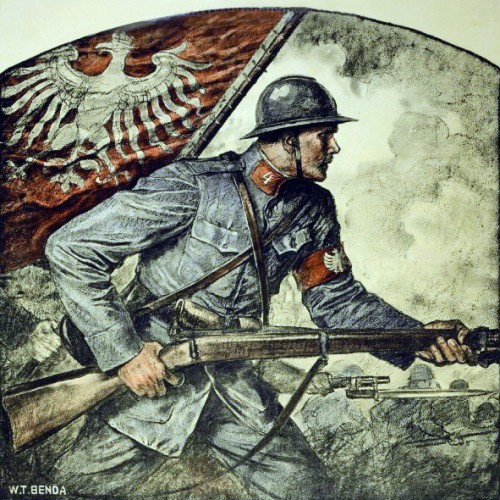 American recruitment poster for the Polish Army in France by W.T. Benda
American recruitment poster for the Polish Army in France by W.T. Benda(public domain, Wikimedia Commons)
WHY WE REMEMBER NOVEMBER 11
Wednesday November 11 marks two great anniversaries and two national days of remembrance. What is more, they are very closely connected to one another.
On November 11, 1918 World War I ended with an ‘armistice’ or cease fire between the armies of Germany, France, Britain, and the United States on the ‘western front’ – that blood-soaked border between France and Germany. This cease fire ended a tragic four years War in which millions of soldiers had died.
In the years after, people everywhere began to honor those who had sacrificed so much in the War. In America, November 11 was recognized as Armistice Day. Today, it is Veterans Day, when we honor those men and women in uniform who have served our country in all our wars. It is indeed a hallowed day.
Now on that very same day, November 11, 1918, Jozef Pilsudski was in Warsaw to proclaim Poland’s independence – after 123 years in which the Polish people had endured the oppressive rule of three alien empires – Russia, Germany and Austria. Today November 11 is Poland’s national day, Poland’s ‘Fourth of July’.
For Poland’s people, World War I had its own special significance. In 1918 the Russian, German, and Austrian empires all collapsed, giving them ‘the chance of a lifetime’ to regain their independence. That independence had been lost between 1772 and 1795, when those same empires had combined to divide up the country in a series of three land-grabs known in the history books as the ‘partitions of Poland.’ From 1795 on, six generations of Poles knew only foreign rule and oppression.
But the memory of independence survived. Indeed, in the 19th century, Poles heroically rebelled to regain their independent statehood, most notably in 1830 and 1863. But their efforts failed. Poland’s oppressors were simply too powerful to be driven out in an insurrection. Indeed it was the reality of oppression that led so many Poles – over five million – to emigrate from their homeland, to settle in France, Belgium, Canada, Brazil and most by far in the United States. Everywhere they created organizations dedicated to helping Poland regain its freedom. In America these organizations included the Polish National Alliance, the Polish Falcons, and the Polish Women’s Alliance.
In partitioned Poland, the dream of independence lived on as well. Among the countless patriots devoted to the cause were the self-trained military strategist Jozef Pilsudski (1867-1935), the renowned virtuoso pianist Ignacy Jan Paderewski (1860-1941), and the political thinker Roman Dmowski (1864-1939).
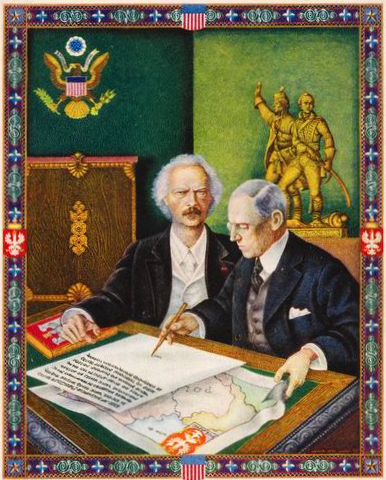 Ignacy Jan Paderewski and Woodrow Wilson: Painting by Artur Szyk (credit: National Museum in Warsaw, Poland, via Europana)
Ignacy Jan Paderewski and Woodrow Wilson: Painting by Artur Szyk (credit: National Museum in Warsaw, Poland, via Europana)When World War I broke out they and their comrades seized the moment to win Poland its freedom. Inside Poland, a killing ground for the armies of Poland’s three occupiers – at war with each other, Pilsudski led legions loyal to him and the cause. Dmowski was in Paris as head of a national committee that aimed at winning recognition from France and Britain for a postwar Polish state. In the U.S., Paderewski put his musical fame to work in winning support for Poland from influential Americans, the massive Polish immigrant community, and even the President of the United States, Woodrow Wilson.
At War’s end Pilsudski made his declaration of independence. Paderewski soon joined him and became Poland’s first Prime Minister. In 1919 he and Dmowski represented Poland’s cause at the Paris Peace Conference. Pilsudski became head of newly formed Polish armies and took on the tough task of regaining Poland’s lands by force of arms. Indeed, it was only in March 1921 when Poland’s borders were secured, after 300,000 fighting men were lost in battle.
The Poland that emerged after World War I became the Poland of the Second Republic. It was a Poland deluged with problems and no allies to assist in its reconstruction. But that new Poland succeeded in deepening its citizens’ renewed commitment to independence. And despite the tragedy of World War II and 45 years of Soviet domination that followed, another Poland, the Poland of the Third Republic, was reborn to freedom in 1989, backed by the United States, Pope John Paul II, and people of Polish origin in the emigration.
The leaders of the new Third Republic acted quickly to make November 11 Poland’s national day. 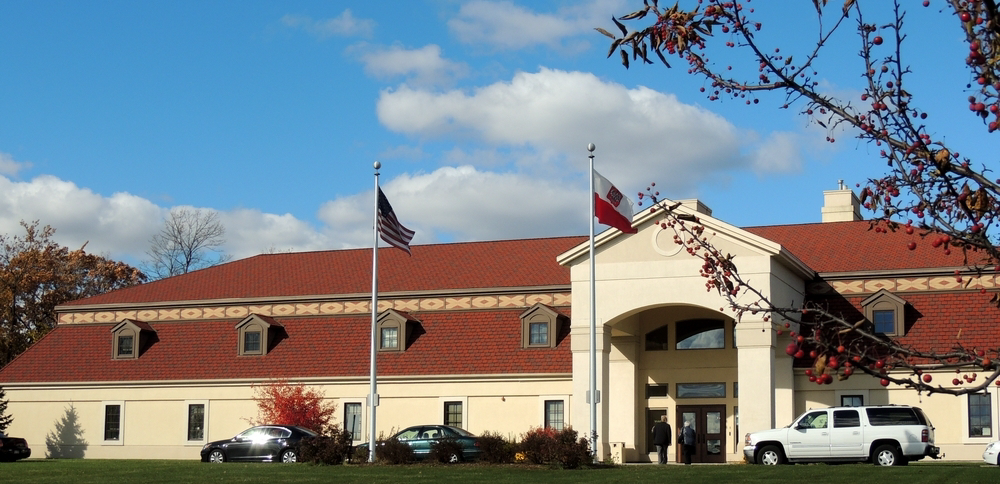
In November 2000, the Wisconsin Division of the Polish American Congress was proud to hold its annual Polish Independence Day/Veterans Day Banquet at the newly opened Polish Center of Wisconsin. Over 240 guests were at that great event, including the Consul General of free Poland from Chicago. This was the start of a beautiful tradition at the Polish Center that will be renewed once our country emerges from the pandemic.
Emeritus Donald Pienkos
Professor Emeritus and Member, Polish Heritage
Past President, Wisconsin Polish American Congress
Archived Posts
- 80th Anniversary of the 1944 Warsaw Uprising
- 2024 Wianki Festival
- 2024 Polish Constitution Day in Wisconsin
- 2023 Merry Christmas
- 2023 Lighting the Light of Freedom on Dec 13 at 7:30pm
- Independence Day and Veteran Day invitation
- 2023 Wianki Festival
- 2023 May 3rd Constitution Day Celebration
- 2023 Lecture on Polish Borders by Prof. Don Pienkos
- 2023 REMEMBER THIS: Jan Karski movie premieres on PBS Wisconsin
- 2023 Upcoming lectures in the Polish Center of Wisconsin
- 2022 Polish National Independence Day
- 2022 Independence and Veteran Day Luncheon (invitation)
- 2022 Wianki, Polish Celebration of Noc Świętojańska (St. John’s Night)
- Celebrating Constitution of May 3, 1791 in Polish Center of Wisconsin
- 2022 Polish Constitution Day, Polish Flag Day and the Day of Polonia
- 2022 March Bulletin
- 2022 Polonia For Ukraine Donations
- 2022 Polish American Congress Condemns Russian Invasion of Ukraine
- 2022 PAC-WI State Division Letters to WI Senators and Representatives
- 2021 Polish Christmas Carols
- 2021 Panel Discussion: Martial Law in Poland 1981-1983 (REPORT)
- 2021 Panel Discussion: Martial Law. Poland 1981-1983 (invitation)
- 2021 Solidarity: Underground Publishing and Martial Law 1981-1983
- 2021 Polish Independence Day and Veterans Day
- 2021 Polish Independence Day and Veterans Day Luncheon
- 2021 Prof. Pienkos lecture: Polish Vote in US Presidential Elections
- 2021 POLISH HERITAGE MONTH EVENTS
- 2021 “Freedom” Monument Unveiled in Stevens Point, Wisconsin
- 2021 PCW Picnic and Fair
- 2021 Remembering Września Children Strikes (1901-1903)
- 2021 May 3 Constitution Day
- 2021 DYKP Contest Winners and Answers
- 2021 DYKP CONTEST EXTENDED and CASIMIR PULASKI DAY
- 2021 February announcements
- 2021 Polish Ministry of Education and Science oficials visit Wisconsin
- 2021 DYKP Contest, KF Gallery and Dr. Pease lectures
- 2020 Help Enact Resolution commemorating the 80th Anniversary of the Katyn Massacre
- 2020 Independence And Veterans Day
- 2020 Remembering Paderewski
- 2020 POLISH HERITAGE MONTH
- 2020 Solidarity born 40 years ago
- 2020 Battle of Warsaw Centenary
- 2020 The Warsaw Rising Remembrance
- 2020 June/July News: Polish Elections, Polish Films Online and more
- 2020 Poland: Virtual Tours
- Centennial of John Paul II’s Birth
- 2020 Celebrating Polish Flag, Polonia and Constitution of May 3rd
- 2020 Polish Easter Traditions
- 2020 Census and Annual Election
- Flavor of Poland (Update 3)
- 2020 Copernicus, Banach & Enigma talk
- 2020 Do You Know Poland and other announcements
- 2020 Flavor of Poland (Update 2)
- 2020 People and Events of the Year
- 2019 Holidays
- 2019 December Medley
- 2019 Independence Celebration
- 2019 Independence Invitation



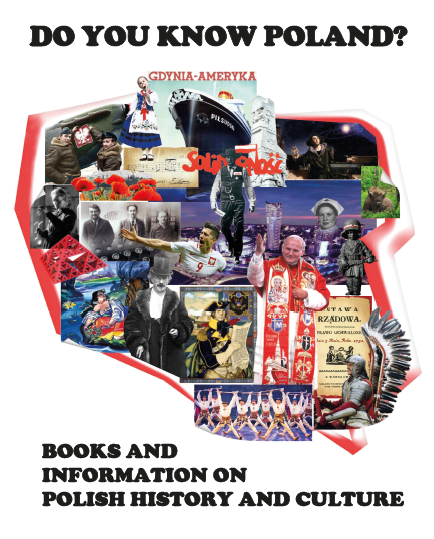
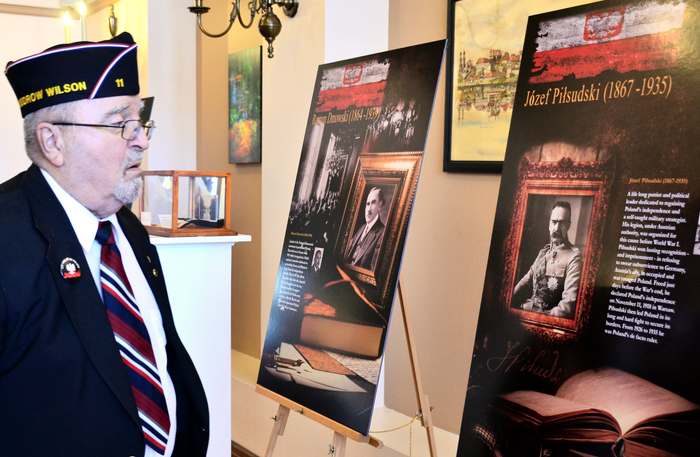 Click on the image above to revisit the 2018 exhibit presenting the main figures of the Polish fight for independence. (Photos Irena Frączek)
Click on the image above to revisit the 2018 exhibit presenting the main figures of the Polish fight for independence. (Photos Irena Frączek)